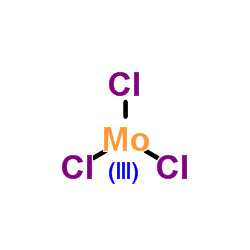| 结构式 | 名称/CAS号 | 全部文献 |
|---|---|---|
 |
五氯化钼
CAS:10241-05-1 |
|
 |
氯化钼(III)
CAS:13478-18-7 |
| 结构式 | 名称/CAS号 | 全部文献 |
|---|---|---|
 |
五氯化钼
CAS:10241-05-1 |
|
 |
氯化钼(III)
CAS:13478-18-7 |